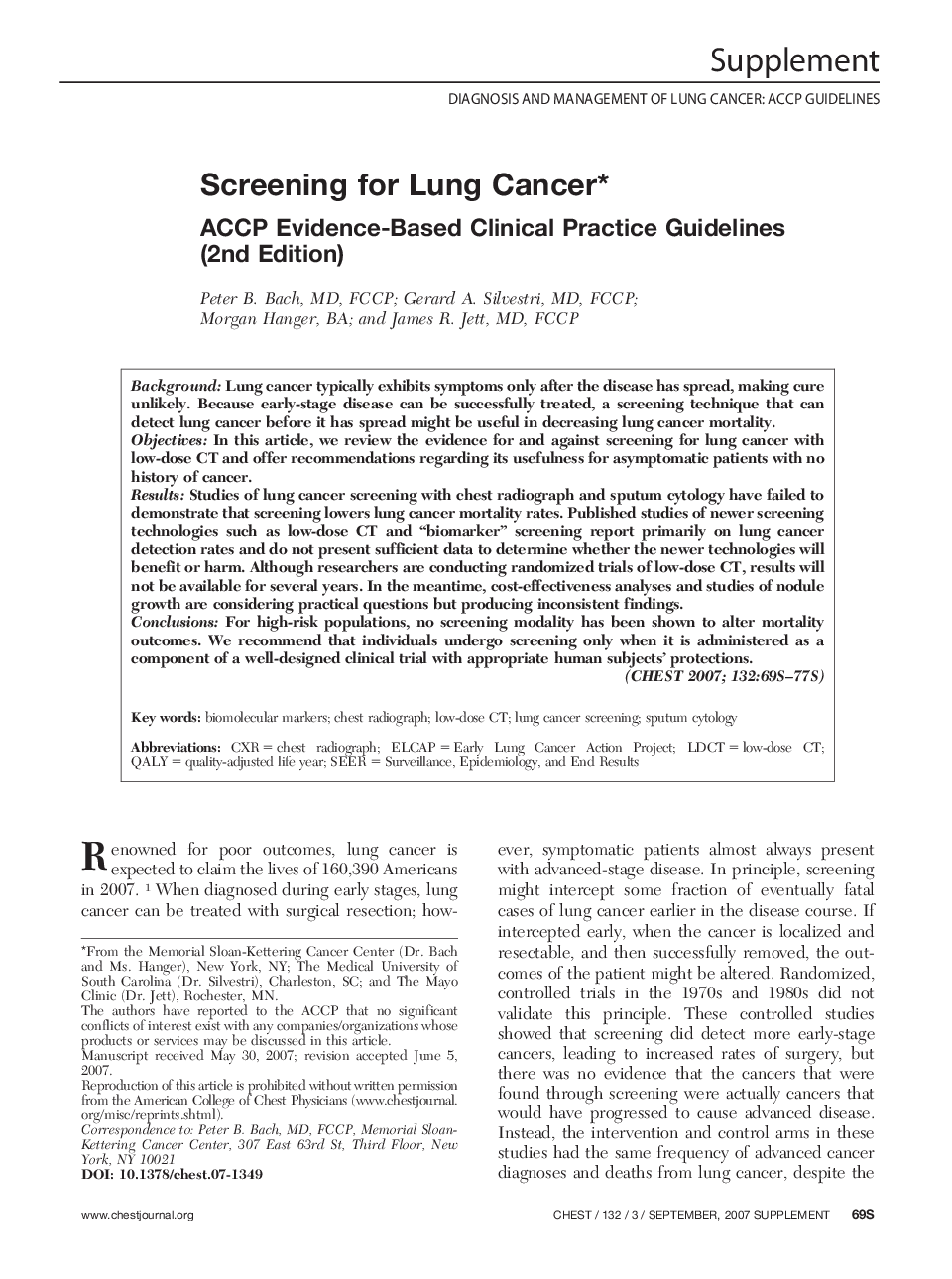| Article ID | Journal | Published Year | Pages | File Type |
|---|---|---|---|---|
| 2906388 | Chest | 2007 | 9 Pages |
BackgroundLung cancer typically exhibits symptoms only after the disease has spread, making cure unlikely. Because early-stage disease can be successfully treated, a screening technique that can detect lung cancer before it has spread might be useful in decreasing lung cancer mortality.ObjectivesIn this article, we review the evidence for and against screening for lung cancer with low-dose CT and offer recommendations regarding its usefulness for asymptomatic patients with no history of cancer.ResultsStudies of lung cancer screening with chest radiograph and sputum cytology have failed to demonstrate that screening lowers lung cancer mortality rates. Published studies of newer screening technologies such as low-dose CT and “biomarker” screening report primarily on lung cancer detection rates and do not present sufficient data to determine whether the newer technologies will benefit or harm. Although researchers are conducting randomized trials of low-dose CT, results will not be available for several years. In the meantime, cost-effectiveness analyses and studies of nodule growth are considering practical questions but producing inconsistent findings.ConclusionsFor high-risk populations, no screening modality has been shown to alter mortality outcomes. We recommend that individuals undergo screening only when it is administered as a component of a well-designed clinical trial with appropriate human subjects' protections.
